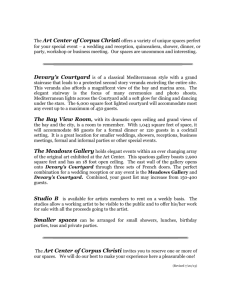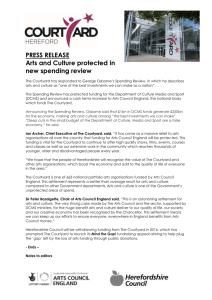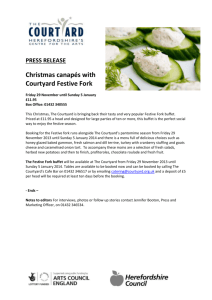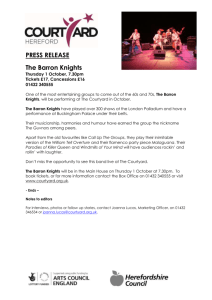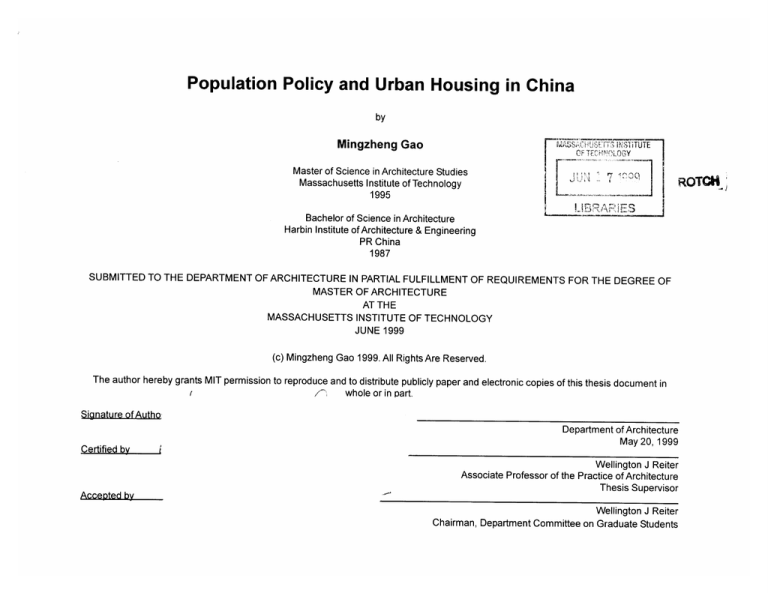
Population Policy and Urban Housing in China
by
Mingzheng Gao
FiBR
E
OF TECHNjM(LGY
Master of Science in Architecture Studies
Massachusetts Institute of Technology
1995
ROTCH
Bachelor of Science in Architecture
Harbin Institute of Architecture & Engineering
PR China
1987
SUBMITTED TO THE DEPARTMENT OF ARCHITECTURE IN PARTIAL FULFILLMENT OF REQUIREMENTS FOR THE DEGREE OF
MASTER OF ARCHITECTURE
AT THE
MASSACHUSETTS INSTITUTE OF TECHNOLOGY
JUNE 1999
(c) Mingzheng Gao 1999. All Rights Are Reserved.
The author hereby grants MIT permission to reproduce and to distribute publicly paper and electronic copies of this thesis document in
whole or in part.
Sianature of Autho
Certified by
Accepted by
Department of Architecture
May 20, 1999
Wellington J Reiter
Associate Professor of the Practice of Architecture
Thesis Supervisor
Wellington J Reiter
Chairman, Department Committee on Graduate Students
Ellen Dunham-Jones
Associate Professor of Architecture
Tunney F Lee
Professor Emeritus of Architecture and Planning
2
Population Policy and Urban Housing inChina
by
Mingzheng Gao
Submitted to the Department of Architecture
on May 20, 1999 in partial fulfillment of the
requirements for the Degree of Master of Architecture
ABSTRACT
This thesis will focus on how urban housing design reflects the new one-child family population policy in the traditional
urban context in Beijing, China. The population policy has changed the size and structure of traditional family, and
further affaected children's growingup environment. Children, used to grow up in a joint family of three generations in
a traditonal courtyard house, now have isolated by apartment box. The traditional social and spatial relationships
among children, families, and neighbors have been extremily weakened. My intention is to restore the lost relastonships
for lonely children in a high density residential complex. This complex, transformed from the traditional single story
courtyard house, becomes one big house, where all neighbors live under one roof as one big family. As a concequence,
children in a one child family still have the same feeling of multi generations living together as their old generations
had before.
Thesis Supervisor: Wellington J Reiter
Title: Associate Professor of the Practice of Architecture
For my parents
4
1
Introduction
6
2
A Big Family &A Big House
9
3
A Family & A Courtyard House
14
4
One Child Family Policy & New Urban Housing
18
5
Conclusion
49
5
For a decade both social scientists and designers have concerned the quality of the urban living
environment for a child to grow up in.The population density, neighborhood safety, and neighborhoods isolation have made the urban atmosphere unpersonal to children. These qualificaionts
of the city strongly differ from the traditonal image of a harmonious, arcadic society, as can be
found in the traditional Beijing city.
Traditional city was designed as one big house. From the large scale city to a blcok, a quarter,
and to individual building, each was one enclosed nuity. These independent unities were connected by the circualtion system, streets, hutongs, and courtyards. The scale of the buildings,
streets, and courtyards represents the social hierarchy of the owners. This social and spacial
hirerarchy in the city gave people a sense of personal relationship at home. So the city can be
best described as a house at a lage scale, and all people live in one unity.
6
The spatial arrangement, from a large city to a small house, strenghened this social hierarchy.
The center of the city, the forbidden city, is a city inside the city, and separated by high city wall
and river around with only one gate on each sides. A serious of grand courtyards and buildings
in the forbidden city sit along the urban axis to empasize the social level and status of the owner.
Who could access to where at what time and how to get there highly depended on the social
hierarchy. This characteristic was reflected at any corner of the city, the imperial city, the inner
sity, and the outer city. The far the place is from the forbidden city and the urban axis, the lower
the social elevel is. Even in a lowest social level environment, a small courtyard, the space layout
was closely correspondent to its social status. As one unity, architecture can improve people's
personal relationship.
Acourtyard house for the family is more than a static vessel for daily life. As humanized space the
dwelling is symbolic of family unity and sanctuary, a public statement of status as well as a
tangible expression of the family's aspirations. It is dynamic entity that expresses in varying
degrees the changing relationship within the family, symbolizing and accommodating evolving
hierarchical patterns. The individual is essentially deregarded in the layout of a chinese dwelling.
Space is defined in terms of family rather than personal needs.
So far we know that from a large scale city to a small scale courtyard house, architecture does
not focus on individul building, but a group of buildings. Inthis group, the spacial structure support the social structure in order to maintain a harmony relationship among children, families,
neighbourhood, and one city was one family. Nowadays one family and a house are sliced by the
one-child family population policy. One is totally seperated from another, people do not know
each other even they live side by side for years. Urban city become a restricions for children's
lives, rather a active living environment.
Finally, a new architecture typology in a old urban context for one child family is proposed. It not
only meets the modern living standard today, but, more important, to restore the traditional social
and spacial relationships they used to have in the cityas well.
TI
Fig 2-1. One big family Beijing city.
A Big Family & A Big House
From the begining, China had been ruled like a family. Without exception, and the same is the
capital Beijing. The city was designed exactly like a big house to accommodate this big family.
In the ancient Chinese cosmology, which considered heaven round and earth square, space is
imagined as a series of squares, so is the city. The center of this ranked space is the urban
center- a square core marked by four gates at the four cardinal points towards which the cosmic
influences converge. This leads to a geometrical image of the universe, enlivened by an elementary network of spatial correspondences. The alternations and contrasts of opposites inherent in
this notion of the univers are ideally determined by the same total order.
n4'
tiz,
19
6
91
fe
M7
L1
0
---------
J
W
17
13
22
23
12
The purpose of this was to make the city a cosmos - a true image of the universe as an ordered
whole. This pursuit of order and harmony explains the great importance of orientation. As the
ideal city, it was a quadrilateral girt round with walls. The royal residence, also square and walled,
lay in the center like a city within the city. Each edifice had its proper place. In the middle, the
audience hall opened on a road that passed between the Alter of Sun and the Temple of the
ancestors and ended at the south gate. Situated at the very heart of the city and, symbolically, at
the heart of the universe, the palace faced south and turned its back on the market, which has
located at the northern most edge of the enclosure, an inferior position reflecting the status of
Fig 2-2. The city - A Big
House.
trade and commerce (figure 2-2)1.
The orientation of the city determined the circulation system within the city. The south-north and
east-west avenues that divided the city into blocks performed a function of social control. Each
1. Pirazzoli-t'serstevens,
Living Architecture, p14.
blodk was surrounded by walls and formed a self-contained little city, the unit for census and
recruitment for forced labor and military service. As it consisted of a quantity of closed cells, the
city had no open center for civic activity like the forum or the crossroads. Rather were its architectural features strung out along an axis in a given direction.
The administrative enclosure containing the royal residences and the government offices always
formed a hiatus. The officials who had an entry to the imperial palace were not free to come and
go as they pleased. Some could go only to certain offices others only to the servants' quarters;
and their points of entry were rigidly prescribed. Personal relationship was clearly corresponding
to the social hierarchy, which the city layout was based on.
The city was laid out with such unity and audacity that the idea of increasing the magnificence of
Fig 2-3. Urban Streets,
blocks, and courtyard
houses.
Fig 2-4. Urban Axis
a pageant always dominant, especially that of imparting an imposing effect to the appearance of
the Emperor. The ruler's power and authority were unchallenged, but the emperor at any time
was more than an absolute authority. He was the son of Heaven, an intermediary between human labors and heavenly favor. This can be clearly reflected by the layer and the scale of the city.
The road network focuses on the palace city which forms the heart of the whole imperial city.
Similar to the main arteries of a human body, these roads link the palace city with all parts of the
imperial city and, through its wall gates, to the entire empire beyound. The road network in a
chessboard style has also reinforced the centrality of the palace city and the central axis of the
whole city.
The major noth-south and east-west streets crossed the city at right angles. The city roads and
Fig 1. The Big Family
avenues ran from a northern to a corresponding sothern gate, giving way to a design feature that
can be called articulated and directed space. The principal north-south thoroughfare ran along a
line that passed through the central nothern and southern gates of each city wall. Parallel to the
gate-initiated streets in both directions werer smaller avenues, and parallel to them were Xiang
and hu-tong, east-west and north-south oriented lanes and alleys. The unambigous articulation
of north-south and east-west space was such that even the city's smallest regions were encased
by walls or streets that ran perpendicular to one another.
Four-sided enclosure of the city and cardinal orientation of its major routes lent themselves to the
further enclosure of virtually every city secter according to the four cardinal directions. The essence of Beijing resides in its adherence to a hierarchic order the system which has been handed
down for four thousands of years.
In summer, the space layout for the city as one unity was totally based on the social hierarchy as
one big family. The spacial relationship was closly corresponding to personal relationship. When
people moved from one place to another, they knew where and who they were and what the
relationship thery had at one particular place. The strong relationships, both social and spacial,
are attribute to the unity of the city designed as one group. Even a small courtyard house, a cell
of the city, followed the same principle as the city. This will be dicussed in the following chapter.
Fig 3-1. Similarity of the
sourtyard idea in the city
and a houses.
A Traditional Family & Courtyard House
This order of the city has been aplied consistently to the last city neighbourhood and the most
humble courtyard house. Just as the city itself is laid out in a cardinal grid, so the courtyard house
is the quintessential microcosm of the larger city-and the reverse also holds true (figure 3-1)1.
The art of bulding was always subject to certain rules. It was an art subservient to the dictates of
the state and intended to ensure a frame for the social structure and to fit into the ordered system
of the surrounding universe. All the components of the building depended on rules which reflected the status of its owner economically, socially and aesthetically. The purpose of the rules
was to allow a large number of people to live together in civilized harmony in a very small space.
1. Chang, Chao-Kang,
China, Tao in Architecture, p50.
Eke
Traditional architectural space is, like a series of closed worlds, of complete independent,
Fig 3-2. Plan and sections
for a typical courtyard
house.
progresseively smaller units - from the city to the private house - which repeat on a reduced scale
the forms of the larger units. A house may be viewed as a city in miniature; the citty as a house
on a vast scale. Symmetry, axiality are th universal rule, every single courtyard and home was
strictly controlled in accordance with the rank and position of its chief occupant (figure 3-2)1.
This conceptons matches on the moral and social plane the supreme importance of balanced
overlapping relationships between individual and family, human order and cosmic order. This
interplay of relatonships strengthens the independent family cells, just as the symbolic organization of space harmonizes the architectural units. The traditional courtyard house as a form of
community housing in Beijing, bears testimony to the exemplary character of the family.
1. Blaser, Werner,
Courtyard House in
China, p17.
The courtyard has the significance for the individual families. The 'world' was, as it were, concentrated round the center of the house. The one-storeyed courtyard house, known as the 'hu-tong'
house (small lane house) which comprises one or more interior courts. Between the access
streets, which link up with the traffic routes, the lots of the courtyard houses extend back between
60 and 70 meters.
The families lived here in isolation from the world outside. An encircling wall with buildings facing
inwards creates the courtyard. Frequently there are also courtyards looking like rooms open to
the sky and arranged at the sides of the main court. Continuous roofed corridors lead to the
courtyards. The house is entered from the little-frequented side street by way of an off-center
main gate which gives access to a narrow outside court, this courtyard served for the reception
of guests. The inner court was intended as accommodation for the women and girls of the family
Fig 3-3. The Traditional
Courtyard House.
Fig 3-4. The relationship
between the young and
the old.
as well as the servants. The second inner court was the living area of the master of the hosue
and was oriented to the south. The buildings on the east and west were meant for his married
sons. In the front part - the outer court - the ketchen and the service and store rooms were
located backing onto the street.
It is clear that the unit of Chinese architecture is not the individual building but the group of
buildings (figure 3-5). The spirit of architectural design was always more resistant to change and
its evolution was more leisurely and less dynamic than inthe West. Development took place over
much longer period of time and on a much broader scale. This is also the policy today, to cherish
the good the past has bequeathed and to pass it on to future generations in an unadulterated
form. This harmony layout has been dramatically changed because of the large population inthe
urban city. Some innovation have to be made in order to match both the spatial and social requirements in this dense city.
Fig 3-5. Roof vie of the
courtyard house in Beijing.
Architecture is not individual building, but a
group of buildings.
The value of any place lies in the relationship between the person who uses it and the place
itself. We tell whether a place is good by that active interrelation and not by any formal rules.
-Kevin Lynch
One Child Family Policy & New Urban House
The dramatial growth of population in the city became an official concern in terms of the restrictions of the urban housing space. The urban environment is not the most suitable enrionment for
a child to grow up in. In fact, the urban enrionment is seen as a less favourable living environment not just for chidren but for growingups as well. Because of the large population and limited
dwelling space, one typical courtyard house used to be occupied by one family has to be shared
by several families. The density was tramendous high, but the courtyard, the central space for
one family, is gone (figure 4-2), and relationships among families are no longer as strong as they
used to be.
I
Patternsof
Number of children in family
change in number
of children
(4+)
per family
Phase 1
1949
model
Phase 2
model
I
1950s
1960s
3
wealthy
I
2
poor
urban
model
model
ru rat
Phase 3
1970s
rural
urbian
model
Phase 4
1980s
rural
urban
Population Policyand Family Structure
Fig 4-1. Models of Family
Size.
Population control became an urban policy started in 60's (figure 4-1)1, along these lines, the
one-child family policy was initiated in 1979, which has reduced the average size of the family
much small than it was before, and the nuclear family has become the dominant family form.
The one-child family policy to date may be judged as rather successful in the urban arera to
control the population size. However recent journalistic and related stories from China, many of
which have been reported in the west have noted that the one-child family policy may not good
for children because it is producing a generation of "little emperors" (the Chinese term for 'spoiled
brates'). Many Chinese are expressing the fear that inthe years ahead China may very well have
millions of only children who are spoiled and maladjusted, and who do not possess the virtues of
1. Croll, Elisabeth, China's
One-Child Family Policy.
Early 1950s: floor space 2440.5
a courtyard complex
Early 1970s: floor space 3196.5
a courtyard complex 131% of
that in early 1950s, a multihousehold compound.
Early 1987: floor space 3786.5
a courtyard complex 155% of
that in early 1950s, a
courtyardless compound.
EL
]
ci
H
I
J
II
II
F........
~~~~~1
~sibi
3
3
the Chinese tradition and culture. In December, 1987, for example, a time magazin writer in
Beijing reported that there "may be hundereds of thousands, perhaps millins, of ...(thses little
emperors) througfhout China ...., (and) the reason (is) Beijing's stringent one-child family policy
Fig 4-2. A courtyard complexin 1950s, 1970s, and
late 1980s.
... (today, these millions of little emperors in China) have been swaddled in the love of their
parents and grandparents; as a result many Chinese fear they are growing up spoiled, selfish
and lazy"1. Indeed, despite the policy's marked demographic and family planning successes, its
so-called negative effexts in the children have been widely reported in both China and the West.
The different personalities of single children and siblinged children are clearly reflects what most
Chinese have beblieved "children's traits develp from interactions with other children". Single
children are not able to benefit from interactions with other children, and also lost some valuable
intangibles such as status in the community, emotional satisfaction, closeness with peers, and
1. Chua-Eoan, Time,
Dec, 1987, p38.
Public Street
Hu-Tong
Proposed relationship between neighbors
Home
Courtyard
-1
r
I
I
Current relationship between neighbors
long-term relationship within a big family.
Fig 4-2. Circulatiion from
public street to courtyard.
Restrictionsfor Children
Fig 4-3. Transformation of
the relationships between
neghbors.
However, the interactions in the urban city today become difficult for children. Children get
around on their own far less than their parents, and even more their grandparents when they
were children, and spend far more of their time under adult surveillance. Playing outside and
getting about in their local neighbourhood - a traditional locus for children's social and recreational activities and experiences - are more often than not forbidden to them.
Freedom of Movement is crucial for children to play outdoors. The characteristics of the home
do have an apparent influence on children's mobility, but the presence of a separate playroom in
-
Horizontal Relationship
-
-U.-
-
--
-
-
-=-~
Vertical Relationship
the house is not a reason for children to play outdoors less; they actually play outside even more.
Children's playing behaviour is determined less by the characteristics of the house than by that of
the residential Place.
The fact that child mobility has changed can also be explained from a different perspective.
Formerly, children's lives were more integrated with those of addults. Especially 30 years ago,
the adult world was smaller than today. Home and work were nearby, their radius of action was
also much smaller. Therefore, the children's world was similar to that of a grownups. As there
were fewer playgrounds with special facilities, children just played out inthe street, on the pavement, and anywhere interesting.
Fig 4-4. Transformatioin
of the traditional courtyard.
-
Children's preferences
Good setting should celarly define where to interact and with whom. The different spaces and
places also convey specific cultural messages about how to act and how to interpret the interaction. Children's interaction as an active process, both individual and collective: individual in the
way that the child has to make a personal involvement in, and attribute meaning to, the cultural
traditions that she or he is exposed to; and collective because these traditions were made by
earlier generations and are mediated by significant 'others', and they are communicated and
transformed in interactions with other children.
So at least three different space are prefered, a private room, a sharing space for personal
interactions, and a open space for collective interactions. These spaces in and around home are
naturally important for the security and local ties of these children. To have one's own room,
where one can close the door and be alone without being observed and supervised by parents is
also taken for granted by most children today. The sharing space functions between the private
room and the outside open space. It is only allowed two to three neighbour children to get together for personal activities indoors. This is a place children can get away both from other
children and from adults. Of particular importance, the third space, outside open space, can be
called social and spatial free zones. The spirit of communiity and time together with other children have high priority. It is characterized by three thinigs. First, there are no adult supervision
and control. Second, there is no purpose or goal for anthing they do. They are places for explicit
do nothing culture, but where the unexpected suddenly could happen. Third, the free zones are
charcterized by emancipatory patterns of action: that is,the actions occuring there are not interpreted or acted out in advance. Preferably all actions are unique.
The new family type needs a new coorespondent housing type with characteristics above. The
"new" does not mean the one seperate from the tradition, instead, it represents both the present
and the past. The traditional joint family stucture dispears, but the community spirit should continue. Single chidren must be happy to enjoy the interactions with others as their elder generations had before.
New urban housesie
The Site and Urban Context
The site is right at the edge of the old city. Two sides of the site are old and other two are new.The
urban contradiction is clear: the old single story courtyard houses to the new multistory bar
buildings, low density to high density.
Far from the south to the site is the forbiddent city; most buildings between are traditional residential courtyard houses. On the north side, the new developed high-rise modern buildings dominate the area right beyund the river; on the west side, the single storey courtyard houses occupy
a large residertial district; the Lama Temple is right on its east side, a palace tyle group of court-
Fig 4-5. Location of the
yard spaces; and the modern multistory residential bar buildings stand on the east side (figure 45, 6, 7).
Fig 4-6 . The edge of the
old and the new.
Fig 4-7 . The east side of
the site.
The urban context shapes the general layout of the site. As the most building inthe urban city, the
proposed building wholly occupys the site, 240 feet wide and 280 feet long. Generally, the west
part of the building is lower than the east in order to give respect to the traditonal Lama Temple.
It is higher on the east to set the edge of the building to the modern box building; and the south
parts are lower than the north sides, where building rise as high as twelve story. So more sunlight
can be introduced to the inner courtyards and the bulding. Two in-ward courtyards are transformed horizontally and vertically from the traditional courtyard house (figure4-4). They are enclosed on the ground level and open to outside on the uper level.
25
Fig4-8. Option 1: the
building complex on
the site.
The Building Complex
Density and Sunlight
Densiy
an
Sunightof
Fig4-9. Section model
the building.
Density and sunlight in the urban area is always an important issue for housing design. To accommodate more families, the building is arranged on the south-north orientation and faces east
and west. Each unit can get enough time of direct sunlight in either mornings or afternoons. For
those on the edge of the site, the sunlight comes from the street around, and for those in the
inner part of the complex, sunlight comes form the courtyards. This arrangement avoids the
minimum ratio requirement of the distance of buildings to the building hight for the those siting
south-noth, and solve the contradiction between the density and sunlight, "the higher the density,
26
the poor the light condition".
Circulation and Community Interaction
Circulation spaces, streets, sidewalks, hu-tong, coriidors inside and outside the buildings, the
doorways, and courtyards are free for children to use with a certain freedom. There are a lot of
interesting things are goig on there, people come and go, and the scope of life spreads out. That
is where the children were spending their time most.
The circulation also implies the gradual discovery of the architectural complex. This complex is
not designed to be grasped at first glance but only through an approach in space and time, like a
piece of music or a scroll painting. To get private room from public street, people have to move
through street, Hu-tong, Courtyard, and finally get home. The interaction among people are
Fig 4-10. Option 2, the
building complex on the
site.
Fig 4-11. Study model of
building and circulation.
Fig 4-12. The building
complex on the site.
involved from the begining to the end during the entire process.
Shared Space and Facility
As discussed before, of three prefered spaces for children, two are the shared. Courtyard and
Hu-tong are the main exterior common spaces. Two courtyards are created in the center of the
complex. Each extendes from the ground level to the third, like a bigger one over the other. They
are connected by kindergarten on the ground level and library on the third level. The shared
courtyards and public facility are closly connected with all units in the complex by the circulaiton
space, which integrated into the whole coplex both horizontally and vertically. Especially, the
second courtyard on the third level offers a sharp awareness of visible activity: seeing people
moving back and forth inside the complex, pedestrian and traffic outside, and river and high-rise
urban landscape far beyund.
28
-
.J-Z~
~~-~'-AIL*
The Unit
Following the same principle, the complex grows from the urban context, and the buildings are
shaped by the complex, and the unit design comes from the complex. To meet the various family
types' needs, units inthe complex are classfied into three-bedroom, two-bedroom, one-bed room
appartments, and studio. The size of apartment are ranged from 900 sqft to 1000 sqft. Except the
one-bedroom apartment and studio, typical uints are duplex, living, dinning and kichen are on the
entry level, and the bedrooms on the above.
Shared Space
Fig 4-13. View of the
shared space on first and
third levels.
Fig 4-14. Extiror of the
shared space.
-
-
~
Two neighbour uints shared one common interiror space for children on the entry level, and two
exteriror spaces on the upper level shared with both neighbors on both the right and left sides.
The common space is two story high, so children can play anyway they want. For those apartments facing the courtyards, the common space on the ground level connected with the one on
the third level right above it. Children from four neighbors can interact together in this vertical
spaces, two spaces are independent, but also closly connected together as one sapce.
Flexibility
Sharing cannot replace flexibility, especially for one child family. As more and more parents have
to live with their son or daughter somehow. When they become older, they have to live together
to take care of each other. One child family apartment have to have the flexibility to accommo-
Fig 4-15. Study section
model.
Fig 4-16. Vew of the Hutong space.
date more people in some ways.
One possibity is that two adjacent units serve one family. The walls between the two units are
removable on both entry and upper levels: the wall separates two kichens, and the other between the two stair cases. When these two walls are moved, each unit is independent from the
othe, and at the same time, they are not seperarated. People can move freely from one unit to
the other.
In summer, the consideration for the one family urban housing started with site layout in the
urban context, it must roote in the specific urban city. The building grows from the site, it must
correspond to both the specific site and its urban context. Finally, the unit inside the building
follows have to meet the requirements of both physical house and the one child family.
Fig 4-17. View from the
Lama Temple.
Fig 4-18. Section model
and detail.
Site Plan
1/200"=1'
Basement Floor Plan
1/42"=1'
1. Parking Space
2. Mechanical Space
3. Laundry
I1'-
2
3
First Floor Plan
-
1. Entrance Hall and
Mailbox
2. Kindergarten
3. Courtyard
4. Bike Parking
ii
u
44
F~
4
1/42"=1'
4
|1 |
Second Floor Plan
1/42"=l'
17V
0
6
1. Administration Office
2. Property Management
3. Kingdergarten
Third Floor Plan
1. Library
2. Courtyard
3. Open to Below
4. Terrace
1/42"=1-
Forth Floor Plan
1. Library
2. Courtyard
37
1/42"=1'
L5th Floor Plan
1. Sculpture
1/42"=1
II
I
-aN
---1-----
6th Floor Plan
1. Sculpture
2. Courtyard
I
I
I
I
I
I
1/2=
7th Floor Plan
40
1/42-=1
F
-
8th Floor Plan
1/42-=1'
9-12 Floor Plans
1. 9th Floor Plan
2. 10th Floor Plan
3. 11th Floor Plan
4. 12th Floor Plan
42
1/42"=lr
Cross Sections
1. Hu-tong
2. Courtyard
3. Kingdgarten
4. Library
5. Tarrace
6. Sculpture
7. Parking
1/42"=1'
First Floor Plan
1. Living Room
2. Sharing Space
3. Dinning Room
4. Both Room
5. Kichen
6. Sculpture
7. Parking
44
1/a-=1'
Second Floor Plan 1/8-=1,
1. Bed Room
2. Open to Below
3. Balcony
4. Both Room
45
Third Floor Plan
1. Living Room
2. Sharing Space
3. Dinning Room
4. Both Room
5. Kichen
46
1/8-=1'
Fourth Floor Plan
1. Bed Room
2. Open to Below
3. Bath Room
4. Kichen
47
1/8-=1'
Fifth Floor Plan
1. Studio Space
2. Closet
3. Bath Room
4. Kichen
48
1/8-=1'
Conclusion
Urban housing design corresponding to urban population policy in a traditional urban context
need to deal with various issues about socialology, urban planning, urban and architecture design. These issues must be explorded inthe process of design. However, children is still the main
consideration.
First of all, as the initial step, I have attempted to present a view of children within their relevant
context. These contextual aspects are studied from both large and small scales: the social structure and the city, and the traditional three-generation family and a courtyard house. The city and
the family is quite similar in terms of its social structure and spatial layout. This similarity comes
from the relationships between people. One conclusion can be made is that the space can im49
prove the personal relationship between people, families, neighbourhood and the society. Just
as Lynch's said "a place lies in the relationship betweenthe place and the person who uses it".
Secondly, There is increasing concern about the effects of the one-child family policy on children's
lives. Of all importance, a child at one family must be lonely, the interaction with others is the
most important consideration for urban housing design. Three kinds of spaces are necessary for
children's lives. The private room, which is belong to his or her 'world'; a interior space for two or
three neighbours to get together to do whatever they like; and the exterior space for a large goup
of children to play together. Inaddition, circulation for children has different meaning, streets, hutong, walkway, path, courtyard are all potential palces for them to interact with others.
Finally, the public facility, such as kingdergarten and library, in the center of this complex could
50
attract people at any age to go there. People living here have different stutus, single, couple,
young, and old, and live in different apartments, but they share these facility. It gives them a
sense of 'home'. The feeling is extended from one apartment outward to the shared library and
kingdergarten, and to the whole complex. People's life is not restricted inside of one apartment
as most people do today, the sense of community and relatonshiops between people, families
and neighbourhoods are enhanced.
It must be emphasized that my thesis is not possible to cover all issues for this topic inthe limited
thesis semester. The further efferts should be made to study how to improve the quality of the
children's spaces, both the interior and the exterior; what they need, and when and how they use
them. I hope someday in the future I have opportunity to continue this study.
51
Asensio Cenver, Francisco
The Architecture of Multiresidential Buildings, Hearts Books International, 1997
Banister, Juudith
China's Changing Population, Stanford Universiity Press, 1987, Stanford, California.
Blaser, Werner
Courtyard House in China, Birkhauser Verlag Basel, 1979, Basel.
Camstra, Ronald
Growing Up in a Changing Urban Landscape, Van Gorcum, The Netherlands, 1997.
Croll, Elisabeth
China's One-child Family Poplicy, The Machmillan Press LTD, 1985, Hong Kong.
Hayakawa, Kunihiko
Housing Developenment, Meisei Publications, 1994.
MacFarquhar, Roderick The Forbidden City, Newsweek, New York, 1972.
Michelson, William
The Child in the City: today and tomorrow, University of Toronto Press, 1979.
Pirazzoli-t'serstebens, Michele
Living Architecture: Chinese, Macdonald & Co. Ltd., 1971.
Pollowy, Anne-Marie
The Urban Nest, Dowden, Hutchinson & Ross, Inc. 1977.
Poston, Dudley L.
The Poulation of Modern China, Plenum Press, 1992, New York.
Rowe, William T.
Hankow: Confilct and Community in a Chinese ciity, 1796-1895, Stanford University
Press, 1989.
Sit, Victor
Beijing, John Wiley & Sons Ltd, 1995.
Steinhardt, Nancy
Chinese Imperial City Planning, University of Hawaii Press, 1990.
Warrd, Cloin
The Child in the City, Bedford Square Press, 1990.
Wong, Wah Sang
The story of Guilinzhai, Glden Ocean Engineering Co. Ltd. 1991
All figures by author except noticed otherwise


